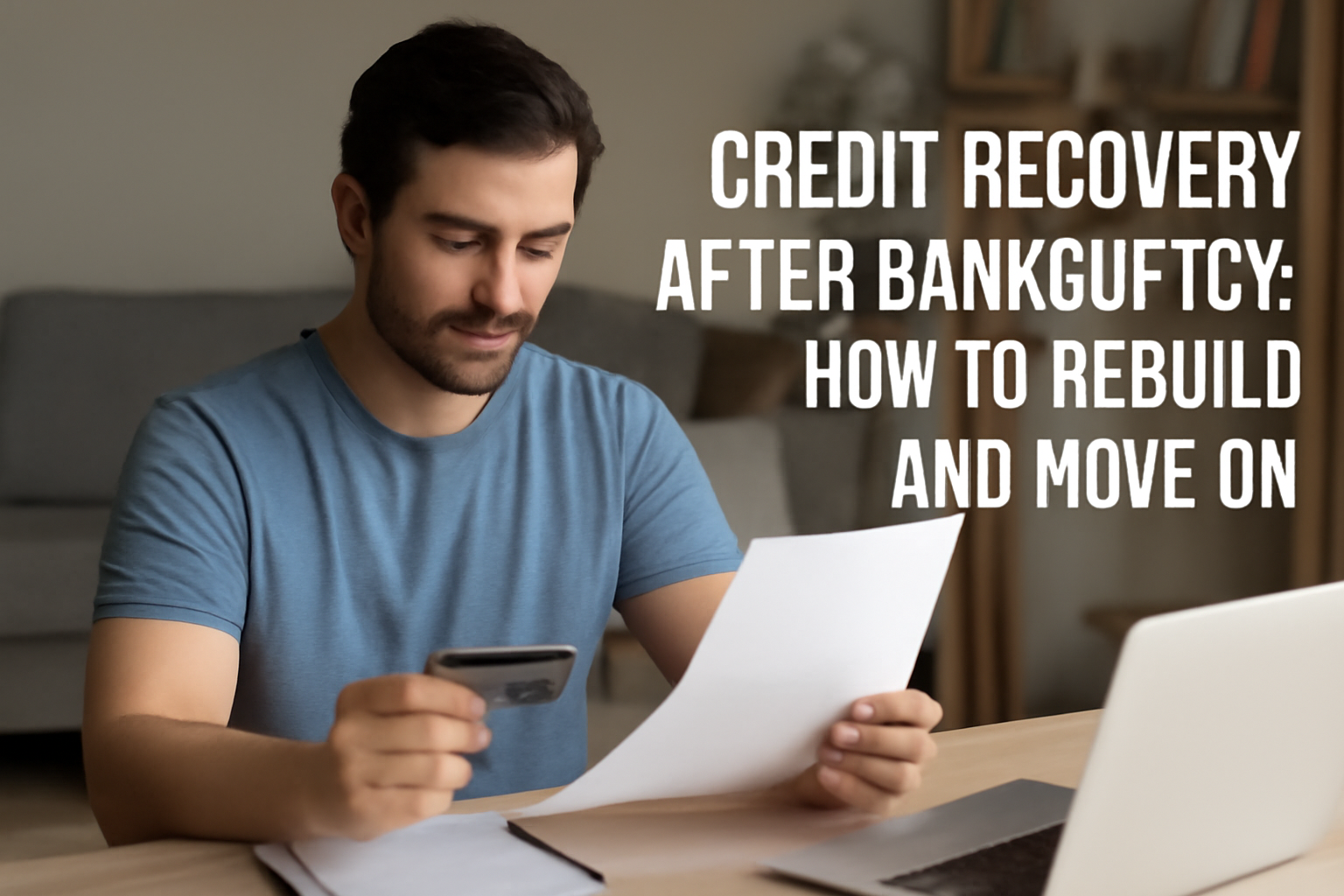Introduction
Filing for bankruptcy can feel like hitting rock bottom—but it doesn’t have to define your financial future. While bankruptcy damages your credit score in the short term, it can also offer something powerful: a clean slate.
The truth is, many people rebuild excellent credit after bankruptcy. The key is understanding how the system works and committing to new, smarter financial habits.
Let’s explore the most effective steps you can take to recover your credit after a Chapter 7 or Chapter 13 bankruptcy and reclaim your financial freedom.
How Bankruptcy Affects Your Credit
Immediate Impact:
- Bankruptcy stays on your credit report for 7 to 10 years
- Chapter 7: 10 years
- Chapter 13: 7 years
- Your credit score can drop by 100–200+ points
- Most (or all) of your accounts are closed
But the good news? You can begin rebuilding immediately after discharge.
Step 1: Confirm Discharge and Clean Up Your Credit Report
Your bankruptcy isn’t officially complete until you receive a discharge letter from the court.
What to do:
- Request credit reports from all three bureaus at AnnualCreditReport.com
- Check that discharged debts are marked “Included in bankruptcy” or “$0 balance”
- Dispute any errors online
Make sure your fresh start is reflected accurately.
Step 2: Start a Budget and Emergency Fund
Avoid repeating the cycle by tracking your income, expenses, and spending patterns.
Tools to help:
- Budgeting apps: YNAB, Monarch, EveryDollar
- Emergency savings apps: Qapital, Digit, Chime
Start small—$10 or $20 per week builds momentum and protects you from future debt.
Step 3: Open a Secured Credit Card
Getting approved for traditional credit after bankruptcy can be tough. That’s where secured cards come in.
How it works:
- You provide a deposit ($200–$500)
- The card reports to credit bureaus like a normal card
- You build credit with on-time payments and low usage
Best options in 2025:
- Chime Credit Builder
- Discover it® Secured
- Capital One Platinum Secured
Step 4: Use a Credit-Builder Loan
Offered by credit unions and fintech lenders, these small loans hold your payments in a locked account, releasing the funds once repaid.
Benefits:
- Builds payment history
- Creates a small savings cushion
- Low risk and easy approval
Try platforms like Self, SeedFi, or MoneyLion.
Step 5: Pay All Bills On Time—No Exceptions
After bankruptcy, every payment counts. Even one late bill can slow your recovery.
Priority bills:
- Rent or mortgage
- Utilities
- Cell phone
- Student loans
Use autopay and calendar reminders to stay ahead.
Step 6: Keep Balances Low
Your credit utilization ratio still matters.
Goal:
- Keep balances under 30% of your available credit
- 10% or less is ideal
Pay your balance off in full when possible—don’t carry debt from month to month.
Step 7: Monitor Your Credit Progress Monthly
Track how your score improves over time.
Free tools:
- Credit Karma
- Experian Boost
- myFICO
- NerdWallet
Set monthly alerts and use score simulators to test how actions impact your credit.
Step 8: Be Selective About New Credit
Don’t rush to apply for every credit offer you see.
Rules of thumb:
- Only apply for one new account every 6–12 months
- Use pre-approval tools to avoid hard inquiries
- Focus on accounts that report to all 3 bureaus
Too many inquiries or new accounts can hurt your recovery.
Step 9: Consider a Co-Signer or Authorized User
If you have a trusted friend or family member:
- Ask to become an authorized user on a well-managed credit card
- Consider using a co-signer for loans (with caution)
This allows their good credit history to reflect positively on your report—without them giving you full access.
Step 10: Practice Financial Mindfulness
Recovering from bankruptcy is emotional. Be patient with yourself and focus on long-term progress.
Habits to cultivate:
- Weekly financial check-ins
- Celebrate small wins (like on-time streaks)
- Use cash envelopes to avoid overspending
- Practice gratitude for your second chance
Your mindset is just as important as your money.
Final Thoughts
Bankruptcy is not the end—it’s a reset. With smart decisions and consistent effort, you can rebuild stronger than before.
Quick Recap:
- Check and correct your credit reports
- Open secured credit tools
- Pay everything on time
- Monitor and track progress
- Use credit responsibly
The road back might take 12–24 months—but each on-time payment, every smart choice, gets you closer to financial freedom.
You’ve already survived the hardest part. Now it’s time to rise.
